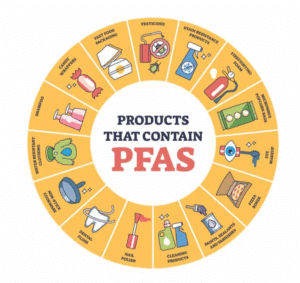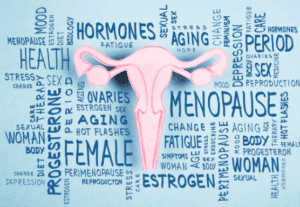You need meat.
Over the past few decades, red meat has been increasingly blamed for many diseases and is the chief contributor to certain early death. Meat, we have been told, is associated with obesity, high cholesterol, heart disease, diabetes, high blood pressure and a host of cancers. One only has to spend about 5 minutes on social media or reading health magazines to be bombarded with offers of vegan meal delivery, raw recipes, and articles promoting the virtues of vegetarianism. Newspapers and magazines incessantly post headlines about the negative health ramifications of eating red meat, fueling consumer fears. For people who care about their health, it is easy to internalise these messages and start seeing meat as an unnecessary and harmful vice. These front-page claims could not be further from the truth.
Humans evolved eating meat.
Humans (and their ancestors) have been eating meat for at least one or two million years. If you divide the human diet into two eras, the Paleolithic (Stone Age, a couple of million years ago) and the Neolithic (Farming Era, around the 10,000 years ago), then anything you can hunt, fish or gather (meat, fish, poultry, eggs, nuts, berries, insects) is a traditional part of the diet. This is the premise of the Paleo Diet. Dairy foods probably fall somewhere before farming (a couple of hundred thousand years ago), as many experts believe humans began herding stock before they commenced agriculture.
Homo Sapiens have evolved as the most successful species on the planet, with the most complex brains, on an omnivore diet. The fertility and pregnancy foods in all traditional societies both past and present are of animal origin – including milk for the Masai in Kenya, grass fed butter for the Swiss, and fish eggs sought by Peruvian tribes. Anthropologists have yet to identify a human society that has survived living on plant foods alone, even vegan groups have been found to seek out and feed animal products to their women before marriage or during pregnancy.
Many of these health benefits are not unique to red meat, but apply to animal flesh in general. Muscle meats are the most nutritious food (after organ meats) based upon your biological needs, according to the Kraken Index of Nutrients. This is a rating of the nutrient density of food developed by Dr. Mat LaLonde, a biochemist and Harvard researcher. The index ranks foods according to essential nutrients that humans need to obtain from their diet. Vegetables as a group come in after muscle meat.
Note: Some plant foods (including kale and blueberries) rate as high as muscle meats.
The most nutritious foods to the least nutritious according to the Kraken Index of Nutrients:
- Organ Meats
- Muscle Meats
- Vegetables
- Fruits
- Grains
- Refined sugars
To qualify, when sourcing meat choose grass fed (or pastured) and organic. Cows, bison, lamb and other ruminants that eat only grass (their natural diet) produce meat that is much more nutritious. Most people eat red meat that is only fed grains, at best, and GMO corn and soy at worst. This has an effect on the fatty acid profile present in the muscle.
Meat may actually be protective against diseases
Although eating meat has been blamed for a score of chronic diseases and health conditions – including obesity, high cholesterol, heart disease, diabetes, high blood pressure, a host of cancers and even impotence! – many of these studies are now being questioned or overturned by new evidence.
Leading researchers and food experts have now discredited theories linking saturated fats found in meat to heart disease stating that they are based on little scientific evidence and may have caused unintended health consequences.
Epidemiological evidence also contradicts the assertion that traditional foods cause chronic metabolic conditions. People who (still) eat traditional diets – rich in saturated fats (including butter, lard, tallow and coconut oil), whole milk and red meat – don’t get fat. They don’t get diabetes and heart disease either. The real culprit is industrial foods, like white flour, corn oil and refined sugars. For decades people have been needlessly avoiding eggs, liver and shellfish.
Animal foods are nutritional powerhouses
Meat, eggs and fish are the best (or only) sources of numerous macro and micronutrients essential for optimum health.
Protein
You are well aware that protein is essential for muscle growth and repair. It is also necessary for energy production, hormone creation and producing antibodies to protect the body against disease. Animal foods contain all essential amino acids needed by the body in the right proportions. While you can take in protein from plants, not all of these protein sources include a complete amino acid profile. The proteins found in meats contain a complete and balanced profile of amino acids – including the ones you cannot make. Protein from meat, fish, poultry and eggs provides the highest quality and quantity proteins compared to plants relative to calories and variety needed. Eggs have been described as the ‘perfect protein’.
It should be noted that for most people getting adequate protein is not an issue. If you eat a balanced diet including these ingredients, it is not necessary to take protein supplements, shakes or bars to get your body’s complete protein needs.
Vitamin B12
This vitamin is essential for healthy red blood cell production, supporting the cardiovascular system and protecting anemia. It is also necessary for DNA production, the brain and nervous system health. Plants cannot create and do not contain vitamin B12 (except mushrooms and fermented foods which contain microorganisms). Strict vegetarians are recommended to take a B12 supplement to ward off illness caused by deficiencies.
Red meat also contains significant levels of other B vitamins, including thiamin, riboflavin, pantothenic acid, folate, niacin, and vitamin B6. Red meat is one of the easiest ways to ensure adequate intake of your B vitamins.
Best food sources of vitamin B12 include: sardines, salmon, tuna, lamb, beef, yoghurt and milk.
Iron
Iron, in conjunction with vitamin B12, carries oxygen from the lungs to every cell in the body and also helps to make blood and is involved in energy production. Although several plant foods contain iron (greens, lentils and beans for example), the iron in plant foods (called ‘non-heme’) is poorly absorbed compared to the iron in meat (called ‘heme’ iron). Supplements and fortified foods contain inorganic versions of iron which are poorly absorbed (and can cause constipation!).
Red meat consumption is particularly important for women who are pregnant or trying to conceive, as iron is crucial for the growth and development of the fetal brain.
The best food sources of iron include: red meat, liver, fish and poultry.
Calcium
Calcium plays a crucial role in building and maintaining a healthy skeleton and preventing osteoporosis. It is also used to control muscle and nerve function and balance acid / base levels in the bloodstream. Plants, grains and tofu contain calcium but these also include phytic acid and oxalate, which interfere with the body’s absorption of calcium.
The best food sources of calcium include: fatty fish and seafood.
Omega 3s
The human brain is made of 60% fat. Essential fatty acids, particularly omega 3’s, are required for brain health. These fats may also be protective against Alzheimer’s and dementia. In addition, omega 3s are important for cardiovascular health and normalizing cholesterol, reducing the risk for heart disease and stroke. Omega 3s also support the skin and joints with anti-inflammatory and anti-aging properties. Omega 3s contain Alpha Linoleic Acid (ALAs), EPA (eicosapentaenoic acid) and DHA (docosahexaenoic acid). ALA is contained in foods (including plant foods such as walnuts and flax seeds), but only animal products contain good sources of EPA and DHA. ALA can be converted into EPA and DHA by the body but the process is inefficient and insufficient. Most of the health benefits associated with Omega 3’s come from EPA and DHA found in animal products – not ALA from plant foods.
The best dietary sources of Omega 3’s include: fish, cod liver oil, eggs, and meat /dairy from grass-fed cows.
Minerals
Animal proteins, specifically red meat, contain significant levels of other vital minerals such as magnesium, copper, cobalt, phosphorus, chromium, nickel, and selenium. Minerals have become increasingly scarce in modern diets due to farming methods, avoiding the use of mineral-rich manure to fertilize crops and the use of depleting superphosphate fertilizers. Due to the scarcity of minerals in the food supply, it is very important to eat as many mineral rich foods as possible.
Meat is delicious… and satisfying!
Meat adds flavor and depth to any meal. Everything from lean cuts, to roasts, to morning eggs, to sashimi, to stocks and slow cooked stews can create a well-rounded, delicious and satisfying meal.
That satisfaction is not just in your head – the combination of high-quality proteins and saturated fats send satiety signals to your brain and your stomach. Being properly nourished also prevents overeating. This means that you are more likely to achieve and maintain a healthy weight for life, if you have a diet you enjoy, rather than trying to follow the latest fads that make you feel deprived and miserable.
We evolved as a species due to our eating red meat. It follows that we need it to enjoy optimum health. Our bodies were designed to function on the nutrients in animal proteins and functions best when fueled with them.



